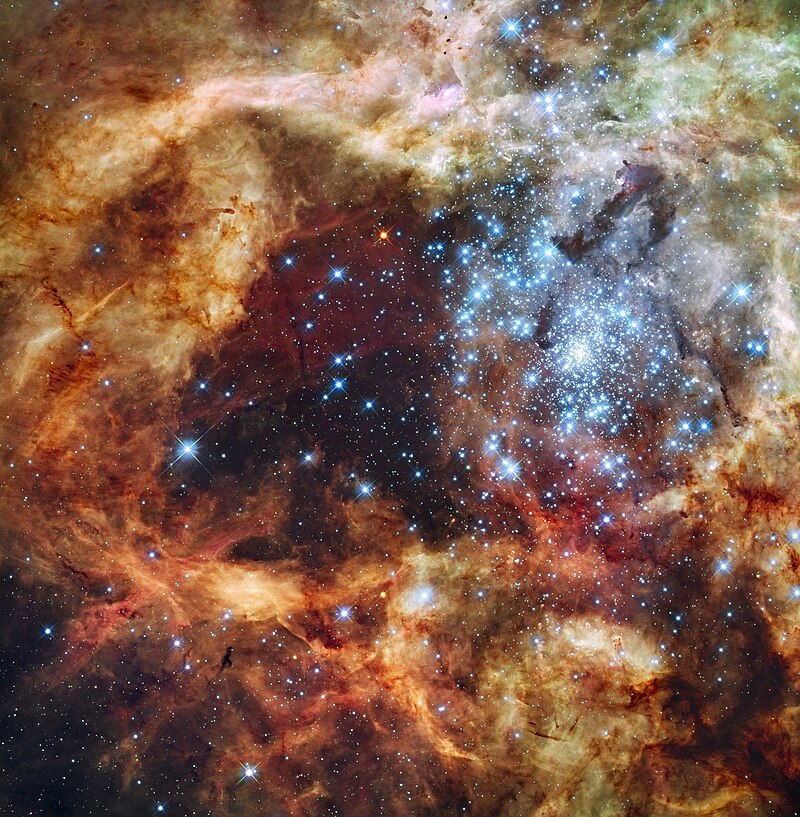Small starbursting dwarf galaxy looks like a giant open cluster in a larger galaxy
Posted: Mon Jan 31, 2022 8:16 pm
Small starbursting galaxy NGC 1705 looks remarkably similar to the supercluster in NGC 6946.
Note that both NGC 1705 and the supercluster in NGC 6946 display a small dense "super-condensation" of stars, surrounded by a loose "halo" of stars.
But the supercluster in NGC 6946 is just a small part of the galaxy - visible at upper right in the picture above - while in NGC 1705 the brilliant cluster is the galaxy.
NGC 1705 is slightly similar to the "extreme compact blue galaxy" I Zwicky 18:
NGC 1705 also resembles supercluster R136 in the Tarantula Nebula in the Large Magellanic Cloud:
In compact blue dwarf galaxies, a supercluster (or possibly two superclusters) dominate the entire galaxy. In larger galaxies, these superclusters are just a small part of the galaxy as a whole.
Read about the new Hubble image of NGC 1705 here.
Ann
Small starbursting dwarf galaxy NGC 1705.
Credit: ESA/Hubble & NASA, R. Chandar
Credit: ESA/Hubble & NASA, R. Chandar
Supercluster in NGC 6946. ESA/Hubble & NASA, A. Leroy, K.S. Long
Note that both NGC 1705 and the supercluster in NGC 6946 display a small dense "super-condensation" of stars, surrounded by a loose "halo" of stars.
But the supercluster in NGC 6946 is just a small part of the galaxy - visible at upper right in the picture above - while in NGC 1705 the brilliant cluster is the galaxy.
NGC 1705 is slightly similar to the "extreme compact blue galaxy" I Zwicky 18:
NGC 1705 also resembles supercluster R136 in the Tarantula Nebula in the Large Magellanic Cloud:
In compact blue dwarf galaxies, a supercluster (or possibly two superclusters) dominate the entire galaxy. In larger galaxies, these superclusters are just a small part of the galaxy as a whole.
Read about the new Hubble image of NGC 1705 here.
Ann


